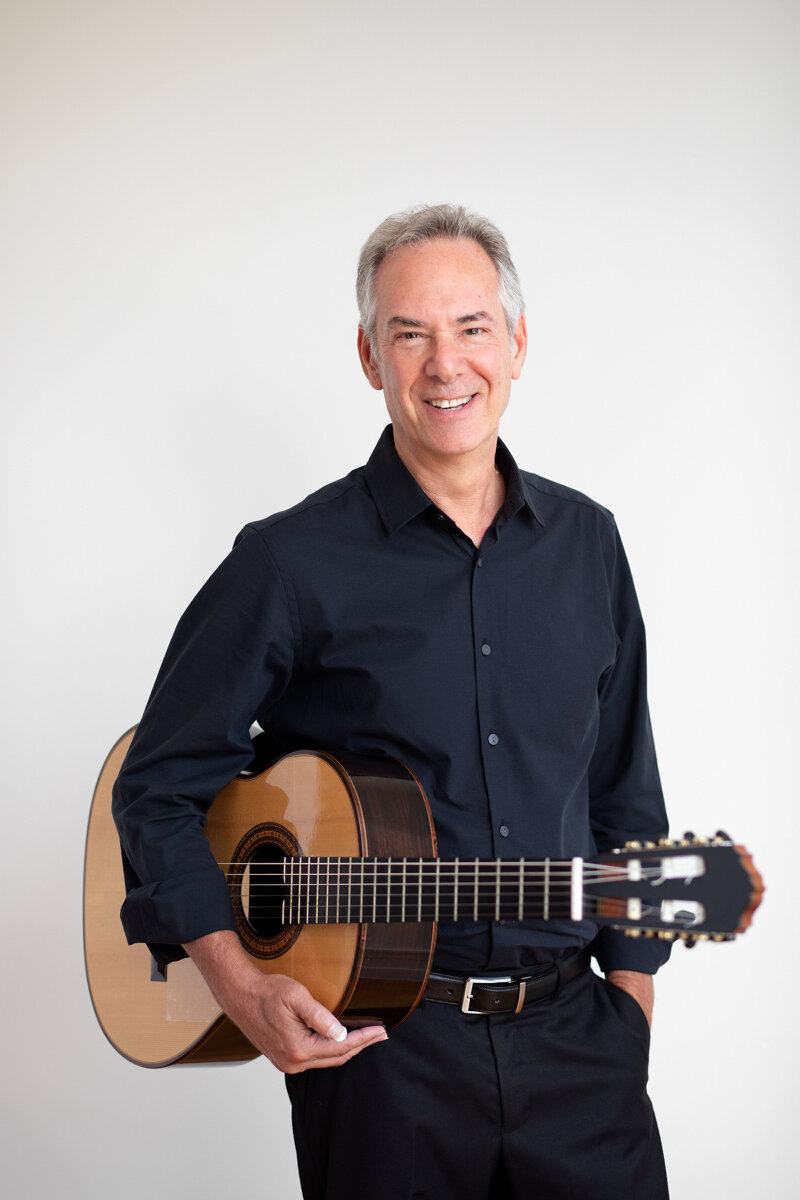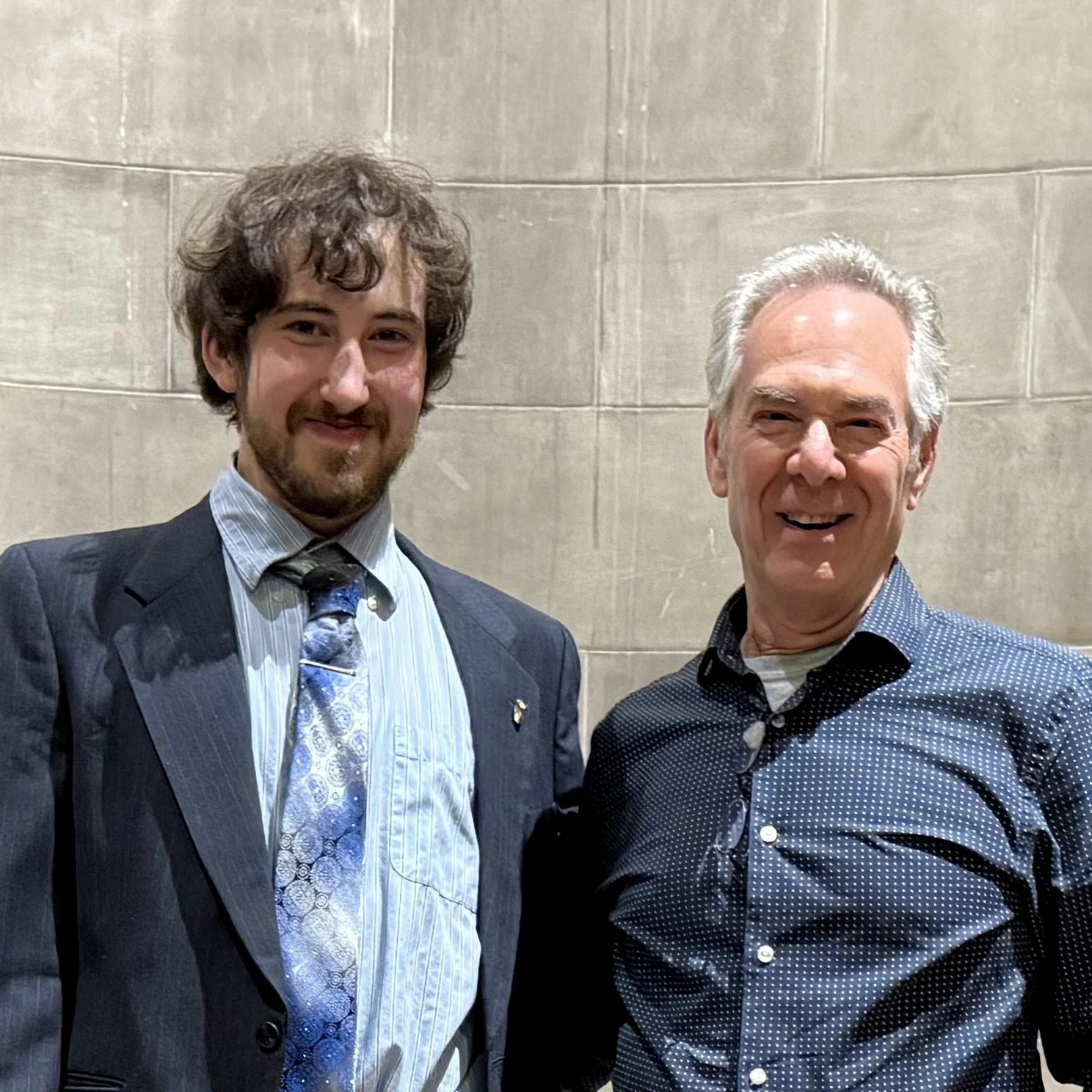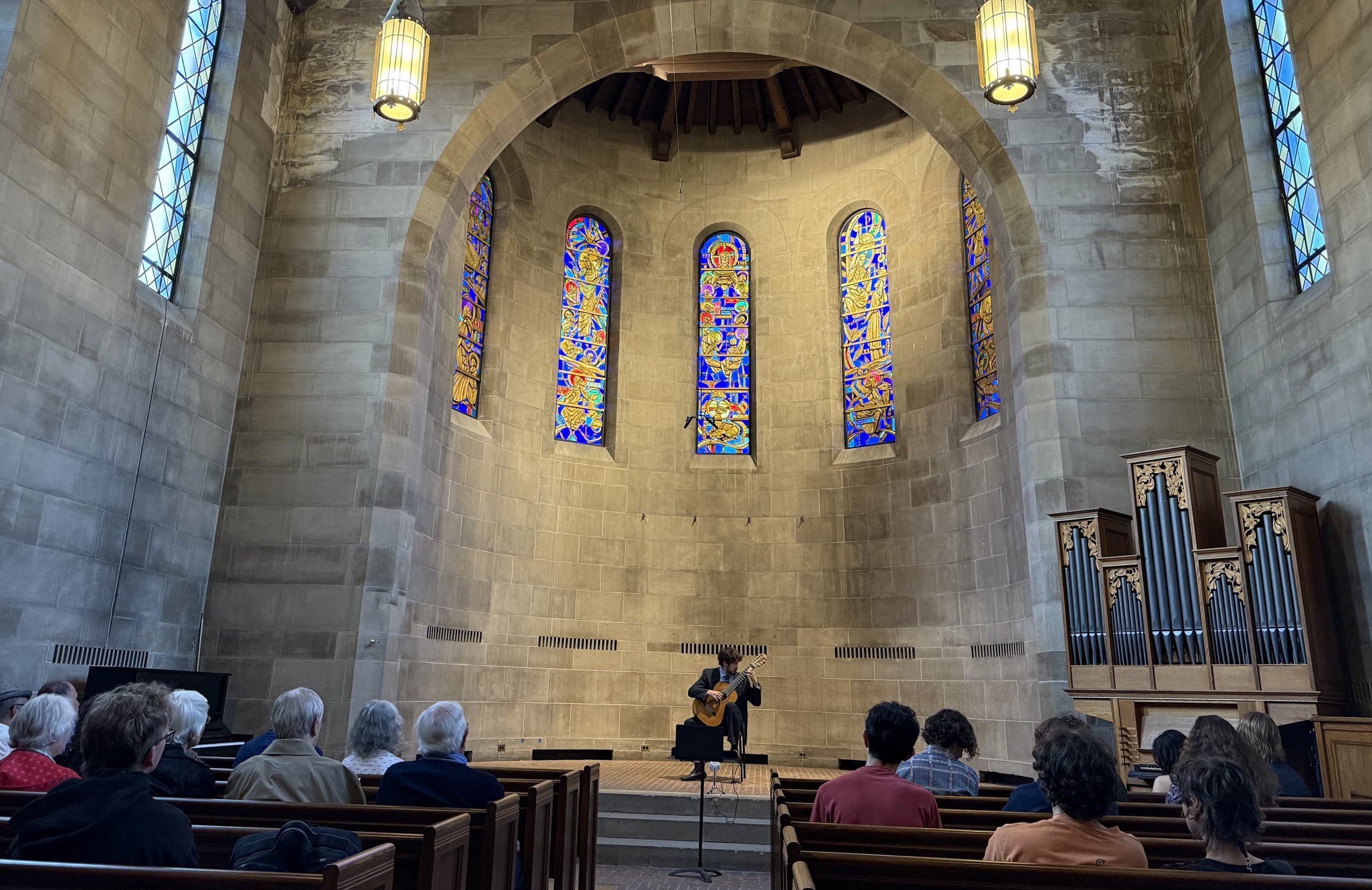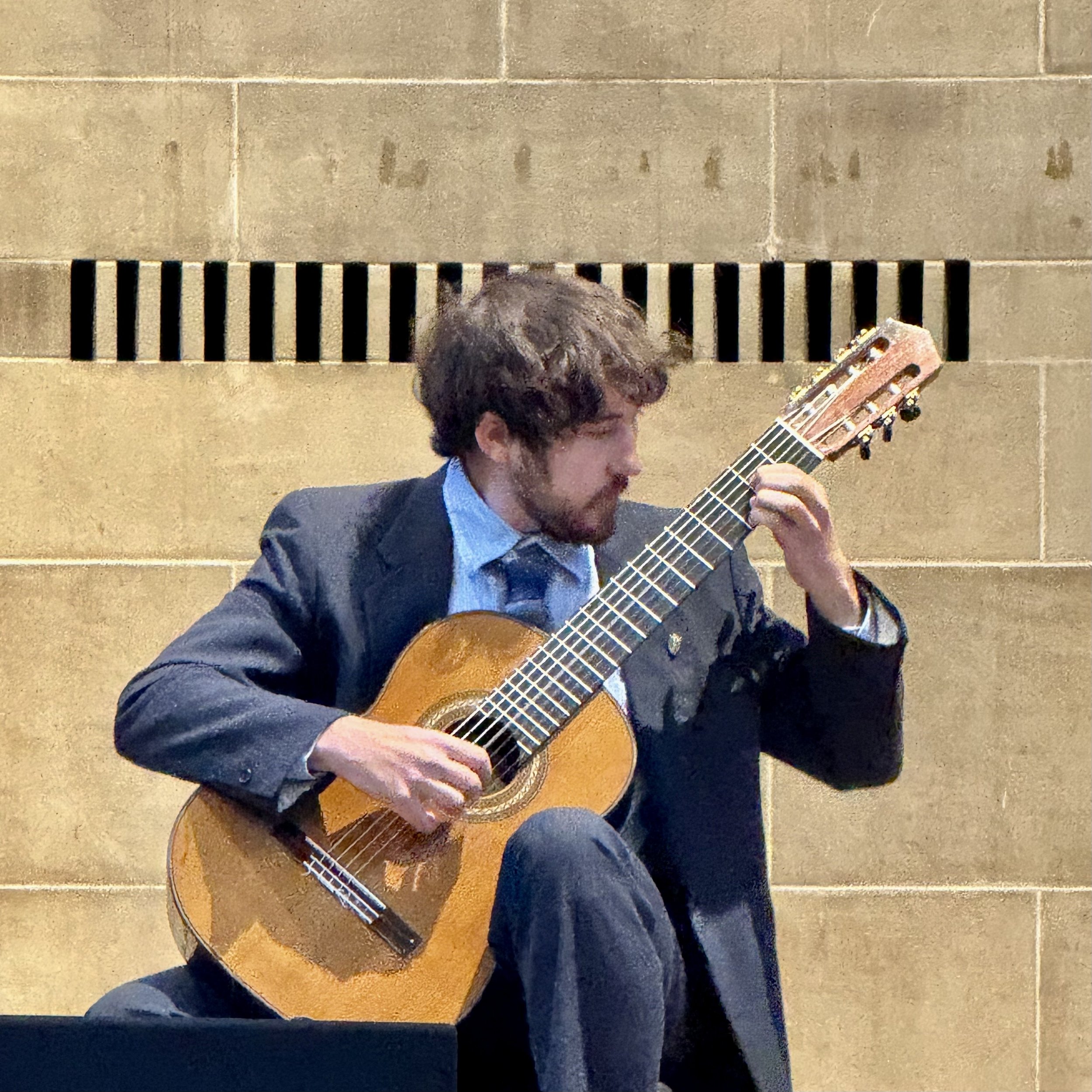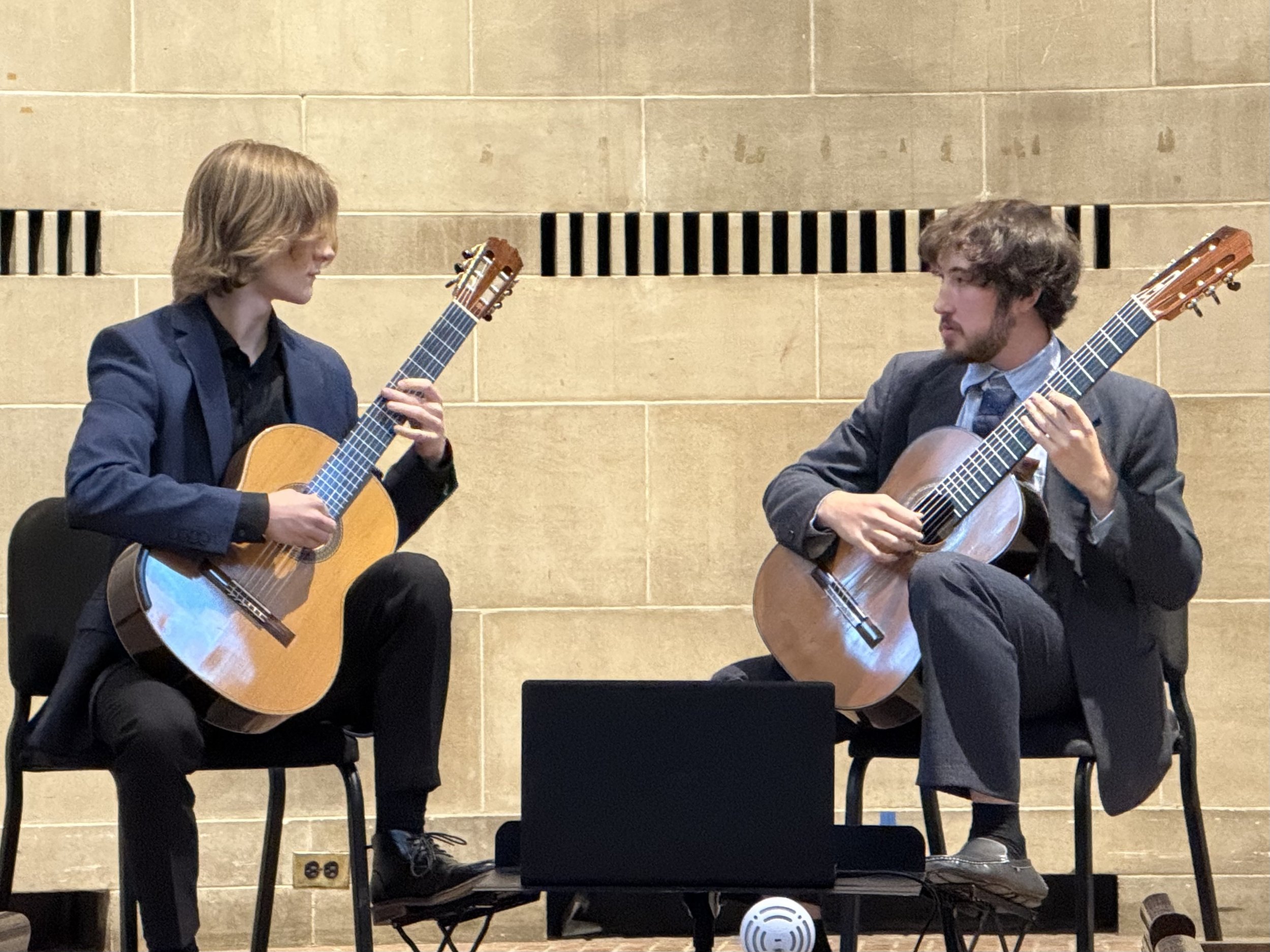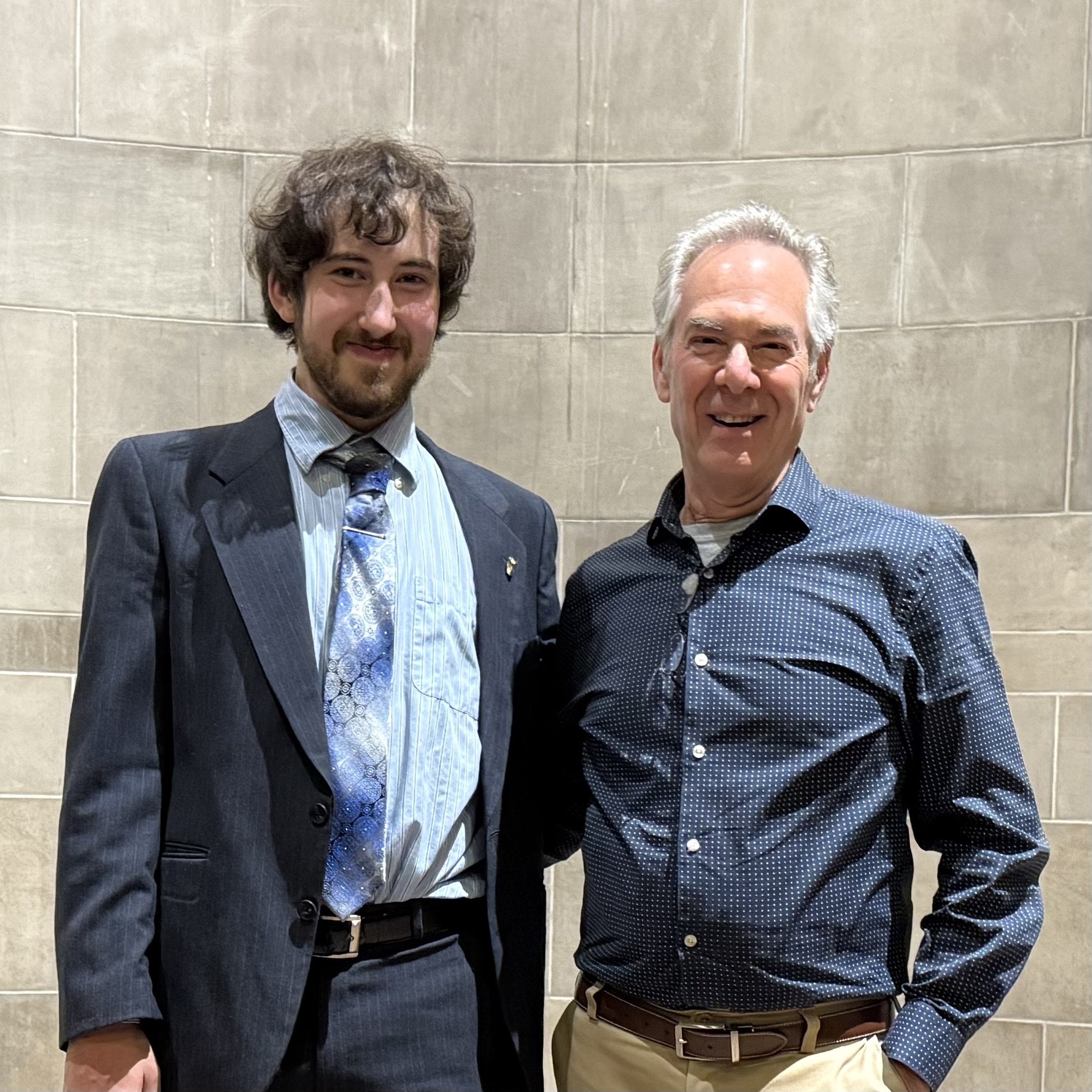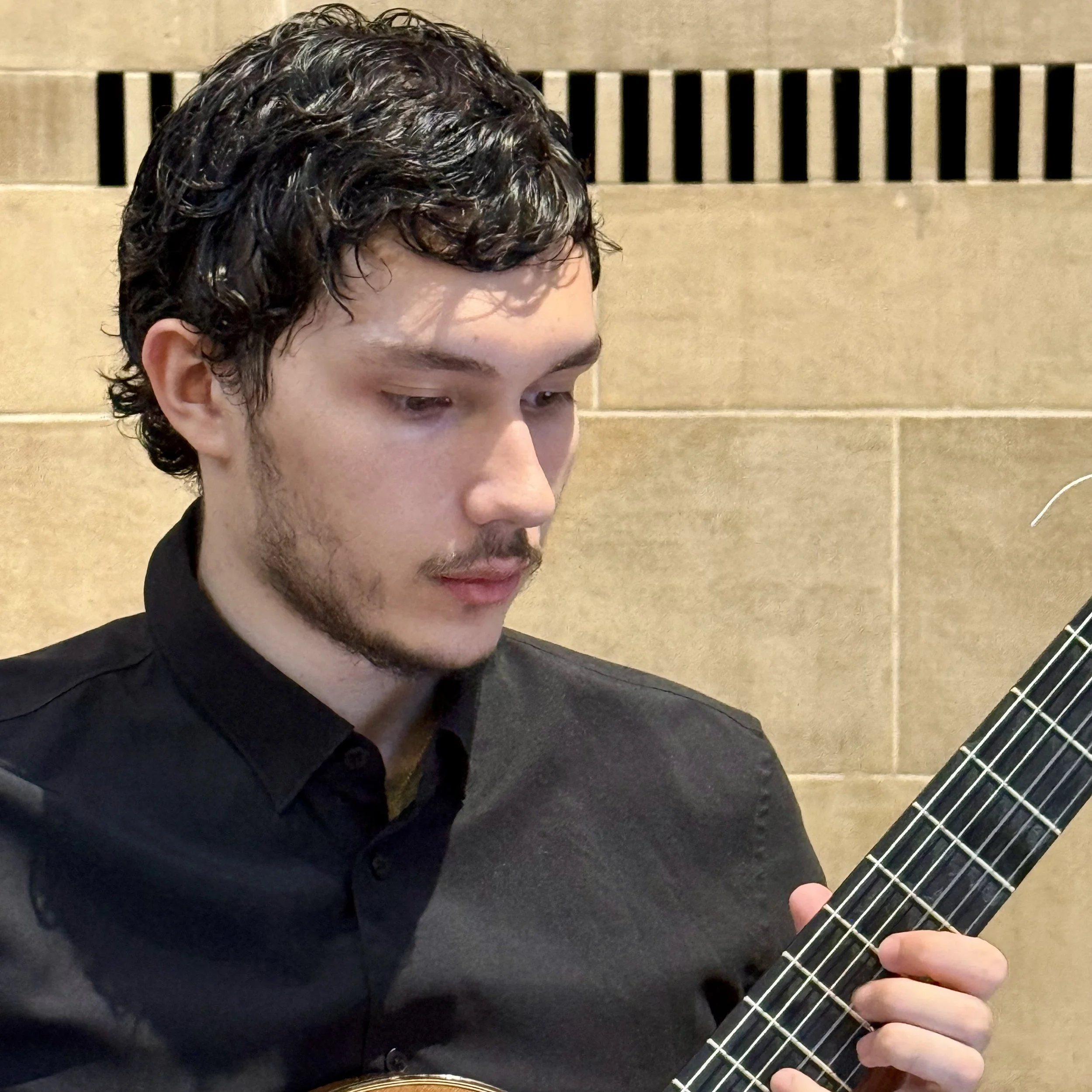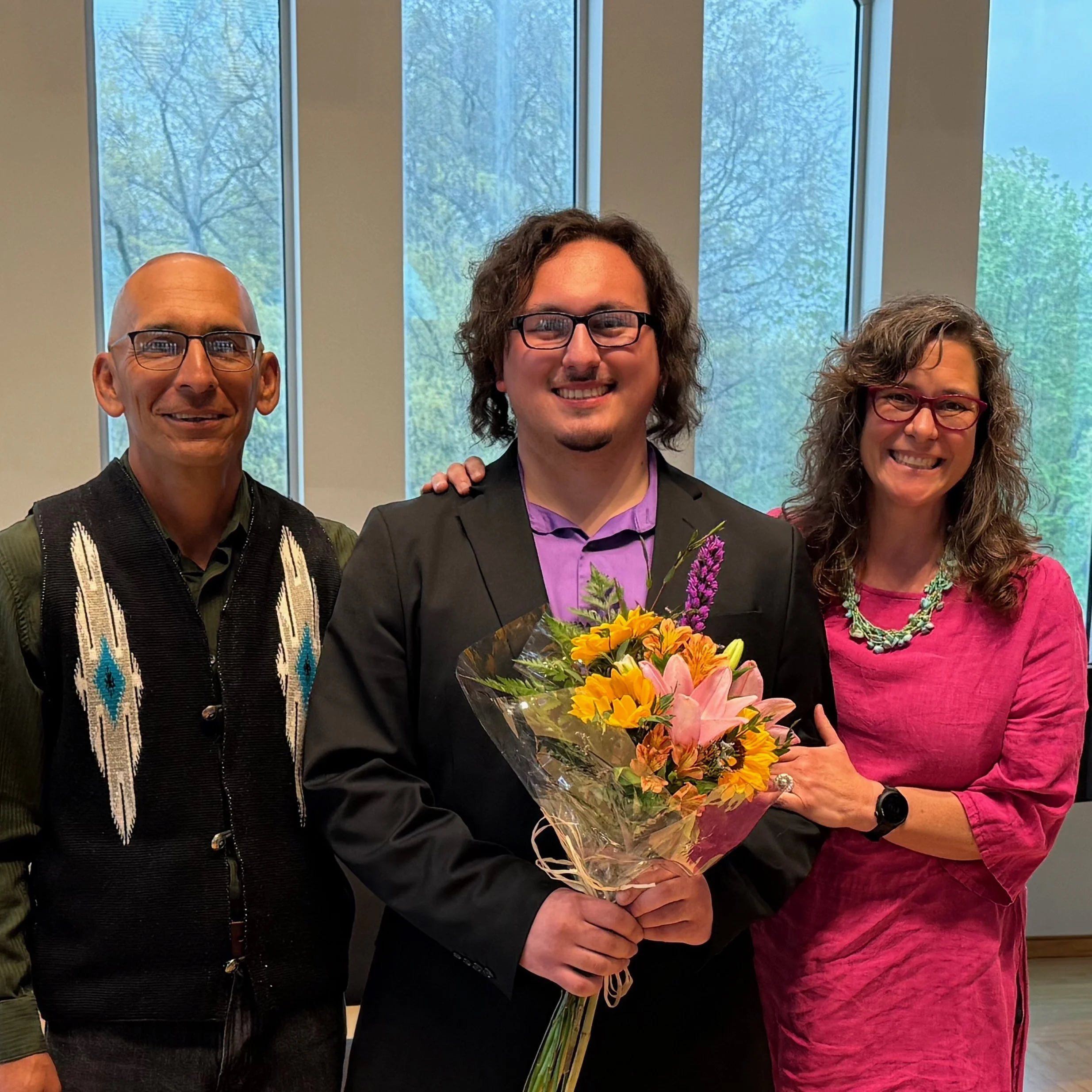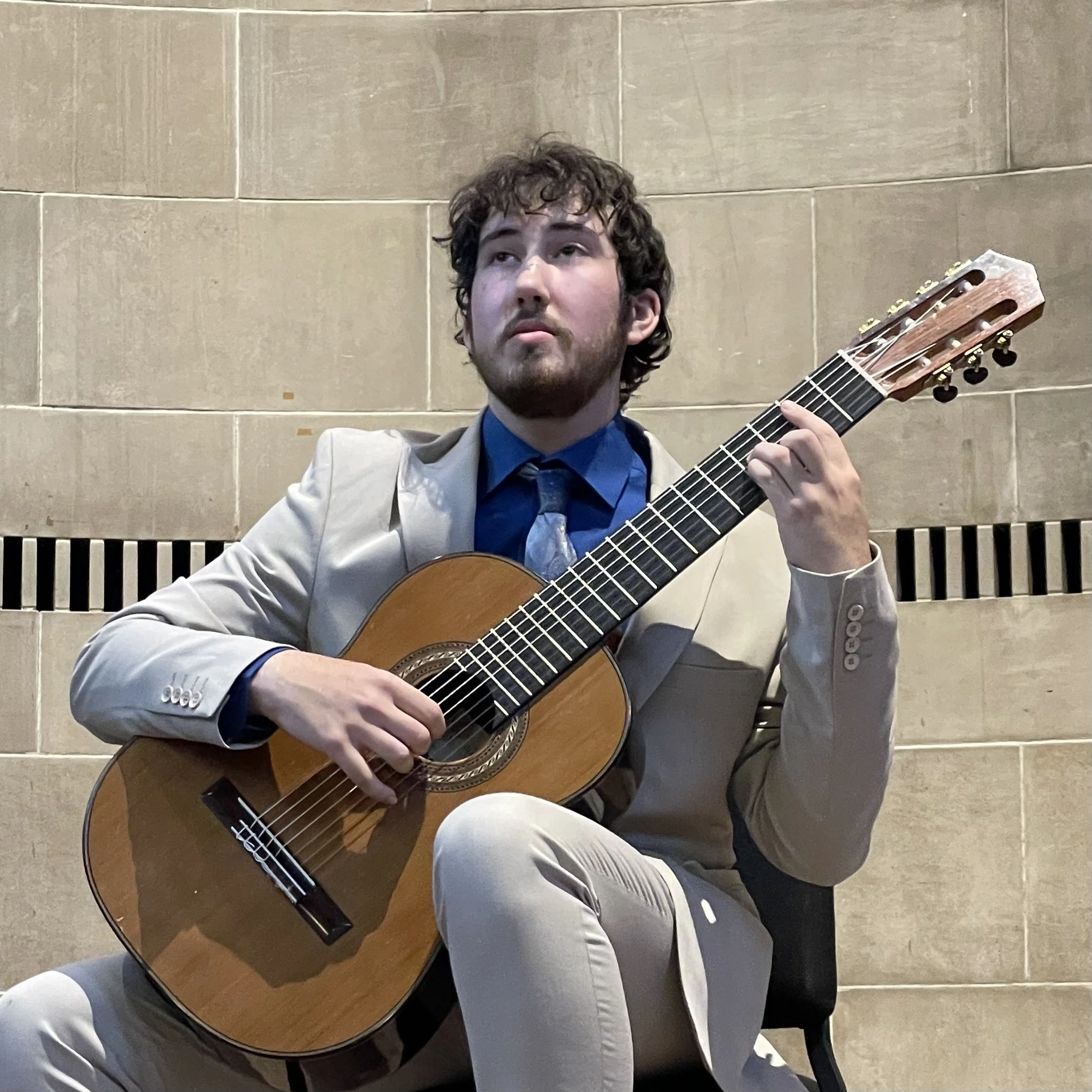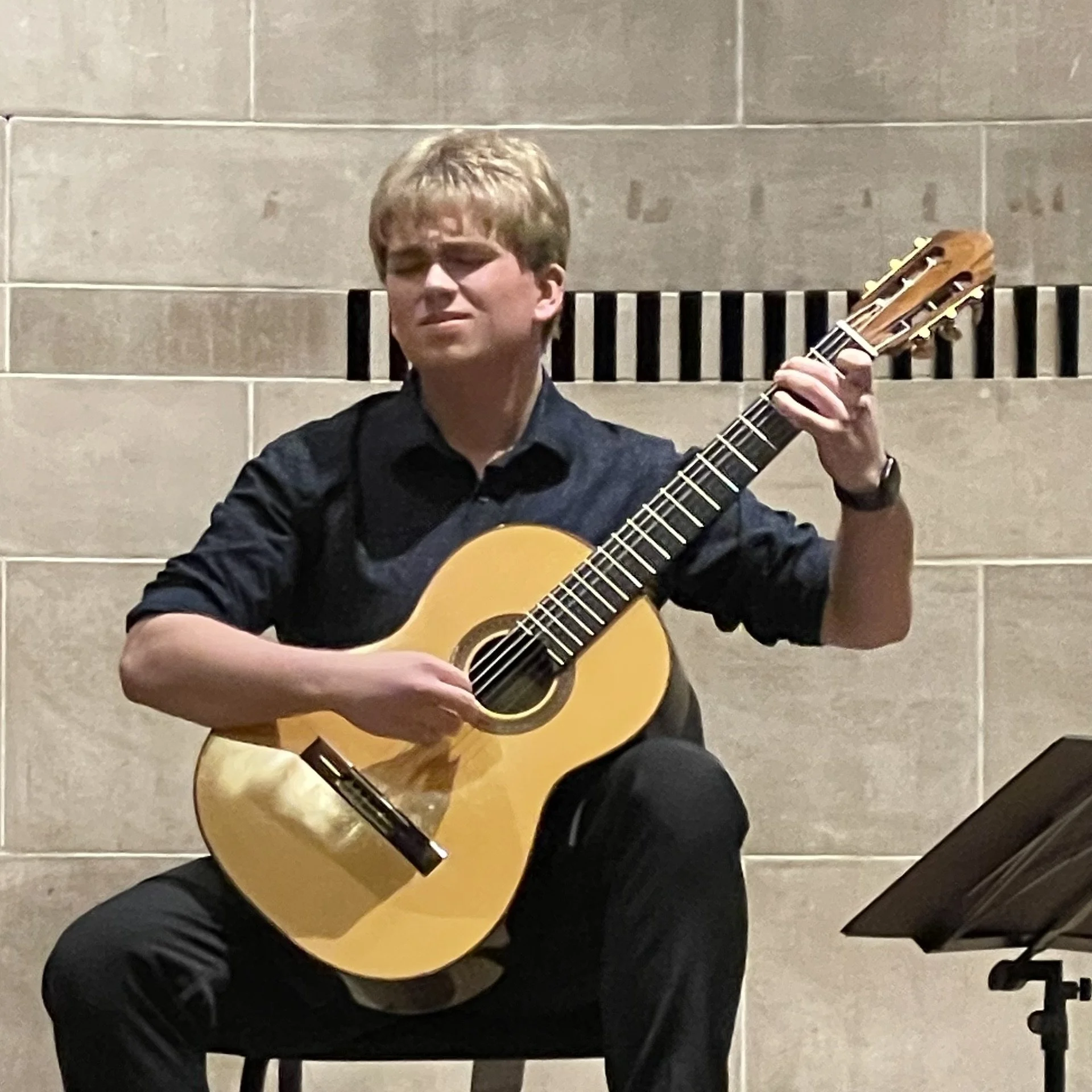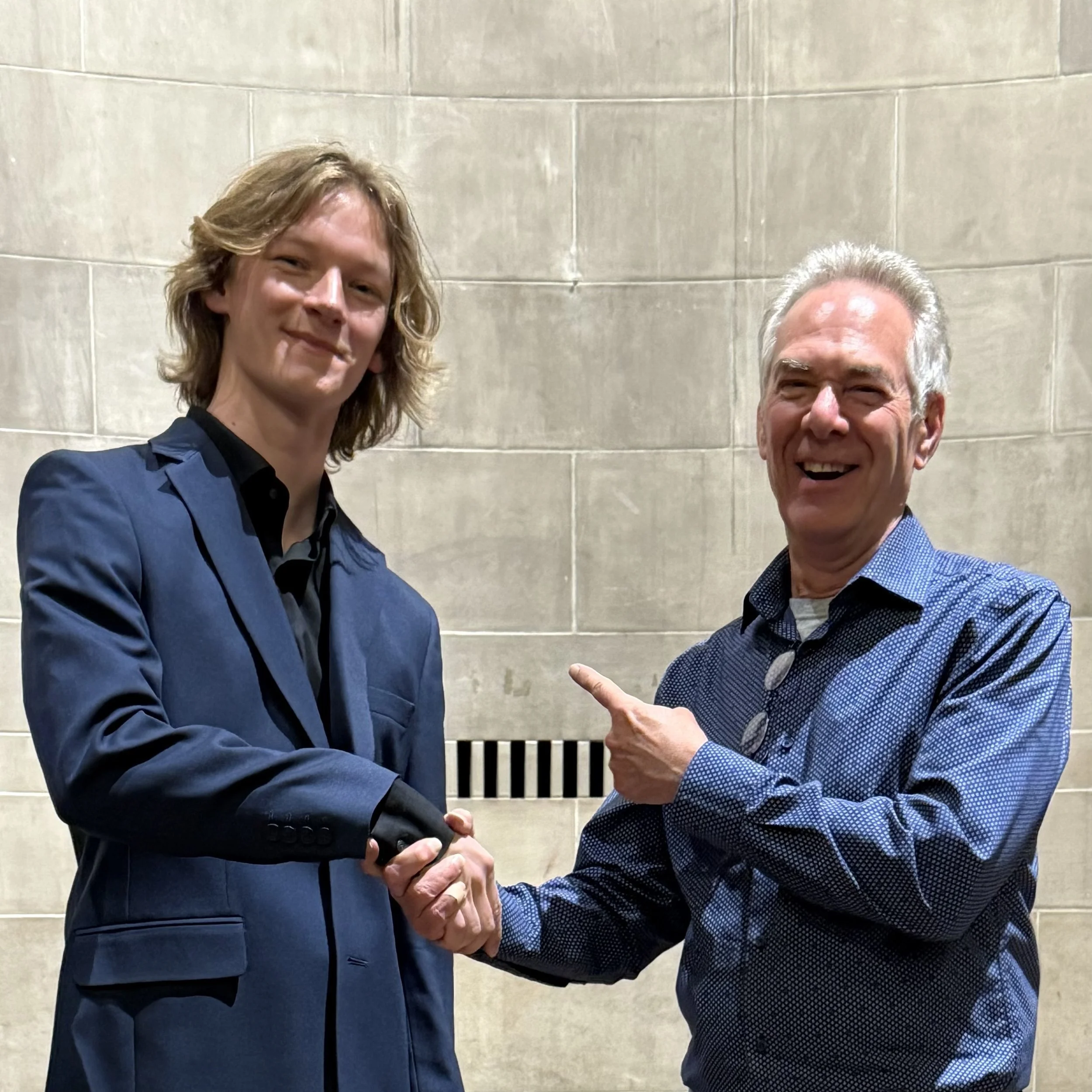Solis Dornan's Sophomore Recital
Solis set the bar pretty high in his first solo recital at Oberlin, last year, but this fact in no way slowed him down in pursuit of this year’s ambitious musical journey. The pieces he worked on were, many of them, absurdly difficult, and the program was long. Still, he demonstrated from the stage a mastery and calm that most pros would envy. He attracted a solid crowd of well-wishers, and from the stage of Fairchild Chapel, he really delivered. (Full program at the end of the post).
Solis Dornan on stage in Fairchild Chapel
Solis opened with two rarely-played works of Rodrigo, his Preludes. These are very challenging pieces, but Solis’ obvious delight in the music (and lots of practice) helped him convey them in a compelling way. These led to one of the evening’s masterworks, Rodrigo’s Un Tiempo Fue Itálica Famosa. Written in the style of a fantasy, the piece incorporates a range of dissimilar musical ideas, each evocative and attractive in its own way. The key element from a guitarist’s viewpoint is the scales. Many, many long, fast scales, most of them traversing the entire neck of the instrument, decorate this piece. And Solis played them beautifully, while barely batting an eye. As if for a breather, after the three Rodrigo pieces, he played two short but delightful Tarrega works.
To finish up his first half, Solis invited onto the stage his guitar duo partner, Sam Schollenberger. They played together in their first semester, last year, and brought to this duet reunion a much matured sense of musicianship and purpose. They performed the second movement of Rodrigo’s Tonadilla, followed by Manuel de Falla’s La Vida Breve. Both pieces were played with electrifying command and delightful nuance, and its worth noting, they played the pieces by memory. With this set, Solis finished his all-Spanish first half.
Sam Schollenberger joins Solis on stage
Solis opened his second half with the famous Introduction and Rondo of Dionisio Aguado (not Beethoven as the program states…) Another virtuosic piece, Solis played it with clarity and panache, and at a very quick tempo. The next set, of two Renaissance works, was a marvelous musical contrast. Once again, especially in Dowland’s Forlorn Hope Fancy, Solis demonstrated impressive guitar skills as well as a fine ear for counterpoint. He concluded with a favorite of his, Pernambuco’s Sons de Carillhões. He plays his own dressed up version, highly decorated and embellished in a most satisfying way. It was a perfect end to a brilliant recital.
The audience rewarded him with an enthusiastic standing ovation. This was a memorable concert!
Solis and his family
Solis and the author
